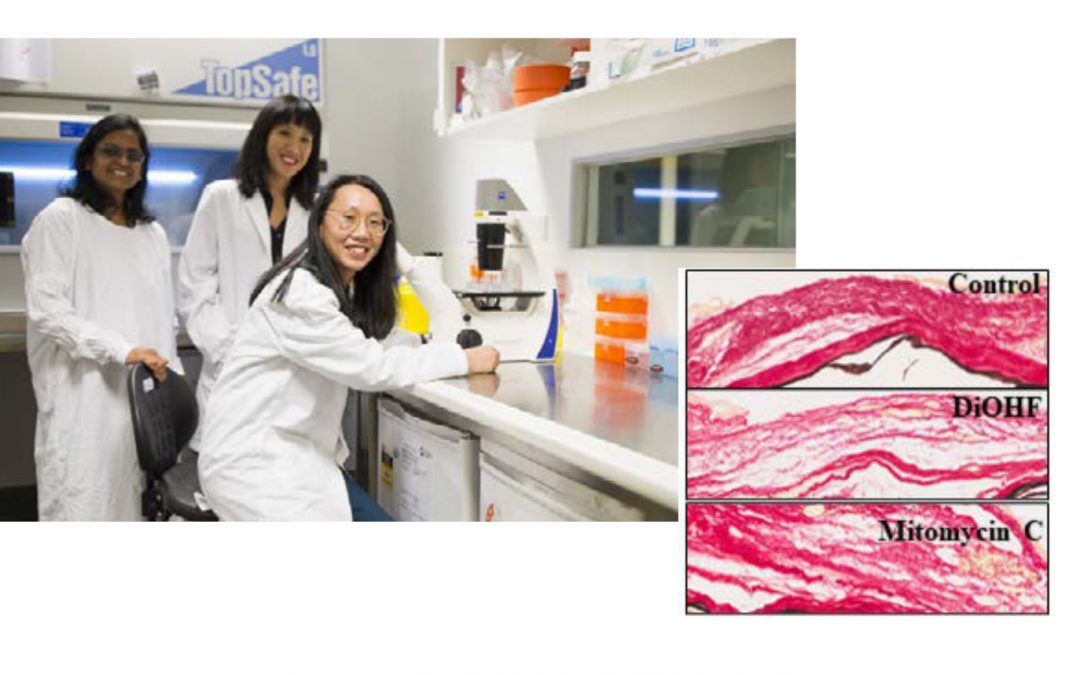ORIA Grant Progress Report 2019-2020
Title: A new drug to control scarring after glaucoma surgery
Investigator: Dr Elsa Chan
Co-investigators: Dr Manisha Shah, Dr Jennifer Fan Gaskin
Aim:Toevaluate the anti-scarring properties of 3ʼ,4ʼ-dihydroxyflavonol (DiOHF) in human tissue cultures termed fibroblasts and a preclinical model of glaucoma surgery(GS).
Methods: Fibroblast activities such as migration, growth, contraction and scarring proteinsynthesis were assessed after DiOHFtreatment. Histology evaluation was performed on eyes from GS-operated mice which had treatment of either DiOHFor its control for 14days.
Key Results: DiOHFreduced fibroblast activities that contribute to scarring.The adjacent diagram shows less deposition of the scarring protein collagen (in red) at the surgical wound from mice treated with DiOHF when compared to the control. The anti-scarring action of DiOHF is comparable to the standard-of-caremitomycin C and is attributable to the antioxidant effect.
Conclusion: DiOHF may be a safer and superior wound- modulating agent compared to the use of the cytotoxic agent mitomycin C in limiting post-surgical scarring.
Implications for Clinical Practice/Science and Future Research: A safer anti-scarring therapy improves the surgical outcomes of glaucoma surgery. DiOHF creates new opportunities for anti-scarring treatment in other eye disorders.
Publications or conference abstracts arising from this work: Fan Gaskin JC, Shah MH, ChanEC.Oxidative Stress and the Role of NADPHOxidase in Glaucoma. Antioxidants 2021;10:238.

